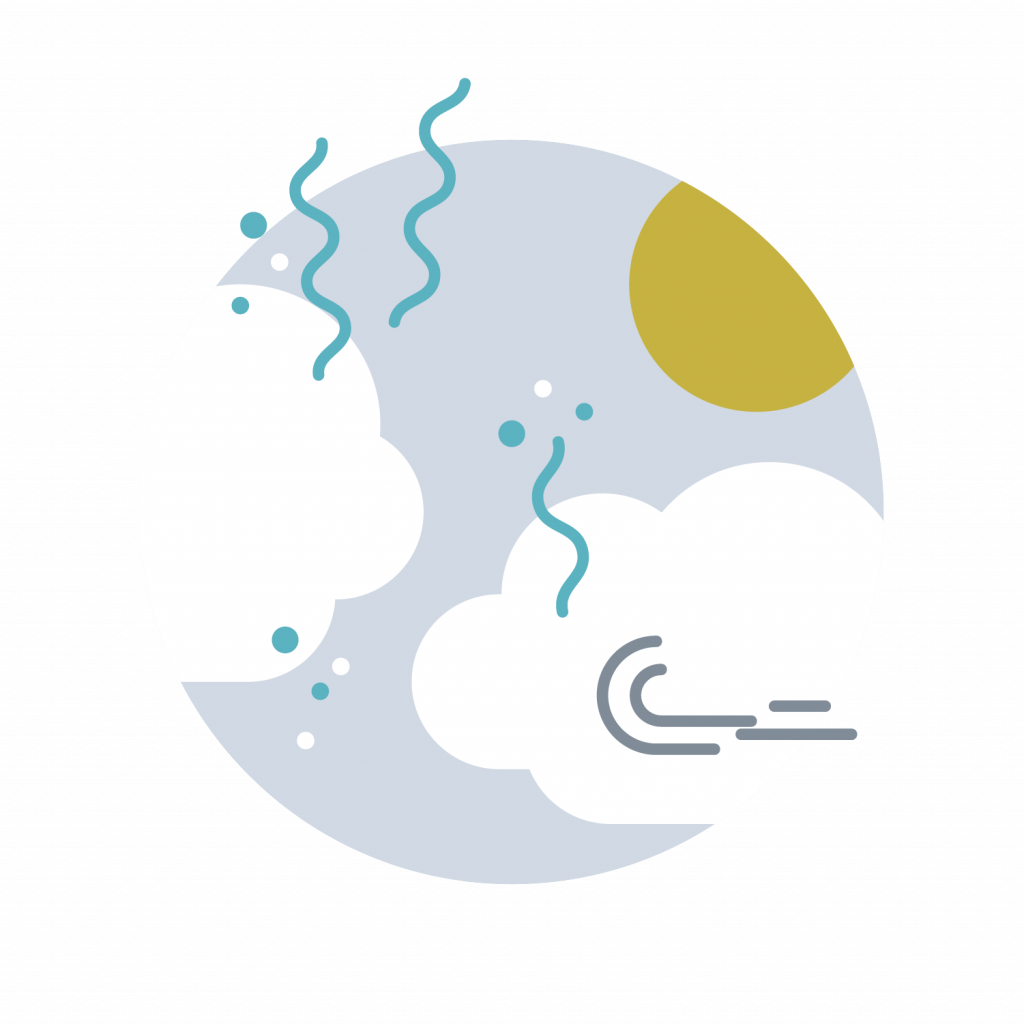Follow the Drop – Evaporation

Evaporation
Hang onto your hat! You’ve chosen to become water vapour, which means your are up in the air, travelling the world in the atmosphere.
Water vapour is extremely important for the weather and for biological processes on earth. It is the most abundant greenhouse gas 1 and it regulates the temperature of the surface of the planet, and as water condenses and evaporates, it transfers energy around the globe as part of water cycling. The amount of water in the atmosphere is just under 13,000 cubic kilometers2. There can be so much water vapour in a particular air mass that some scientists call these atmospheric rivers3.
As a water vapour, your water quality should be very good. This is because water vapour generated through evaporation or transpiration transpiration does not often contain contaminants. This being said, atmospheric pollution may mix with water vapour which can lead to contaminated rain or snow.
Definition
Greenhouse gas: Greenhouse gases absorb heat energy reflected back from Earth and re-emit it back towards the surface.
Transpiration: When water escapes through plant leaves as a gas
Fun Fact
Water vapour: Water vapour is generated at higher rates under sunny, warm, dry and windy conditions, and warm air can hold more water molecules than cold air.

Where next?
Although you are likely enjoying floating in the atmosphere, because you have evaporated, you have left the Watershed and you have the option to start the game over. You may also be interested in learning about the Water-Food-Energy nexus. No matter what your decision is, you will definitely learn more interesting and important information about the water around you! Have fun on your next adventure!
References and Further Reading
- NOAA: National Centers for Environmental Information. (n.d.). Greenhouse Gases | Monitoring References. Retrieved May 21, 2020, from https://www.ncdc.noaa.gov/monitoring-references/faq/greenhouse-gases.php#h2o
- USGS. (n.d.). How Much Water is There on Earth? Retrieved May 21, 2020, from https://www.usgs.gov/special-topic/water-science-school/science/how-much-water-there-earth?qt-science_center_objects=0#qt-science_center_objects
- Arcuni, P. (2019, January 16). Rivers in the Sky: What You Need to Know About Atmospheric River Storms. KQED. Retrieved from https://www.kqed.org
